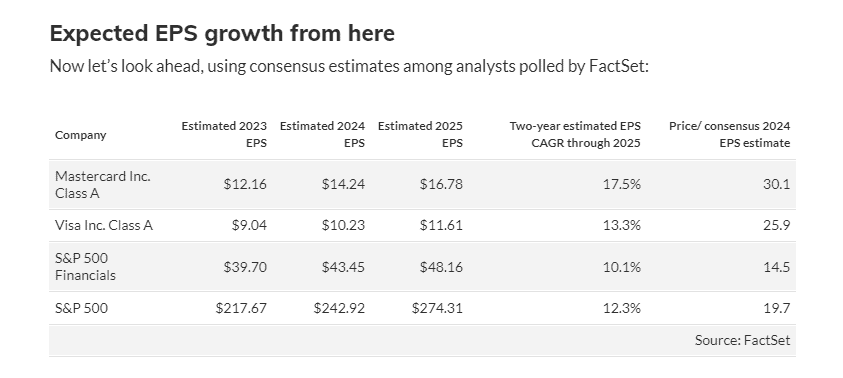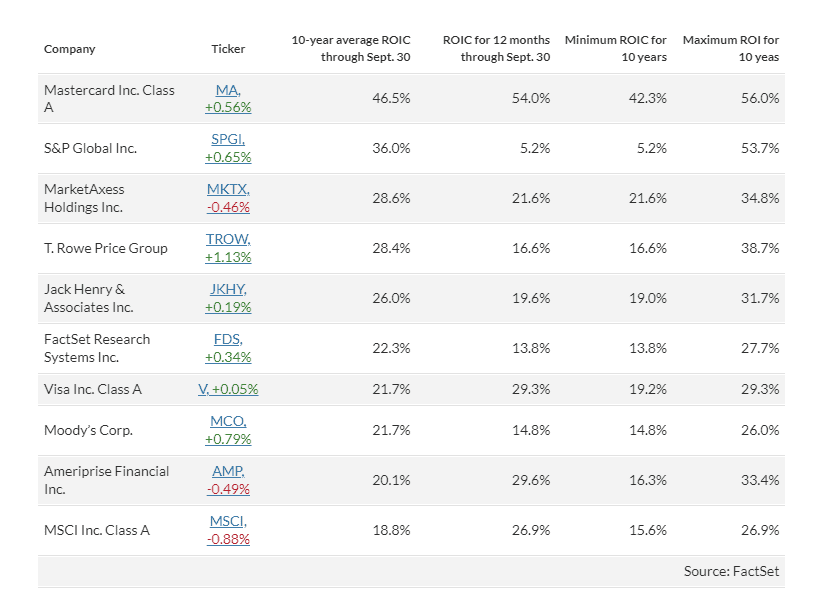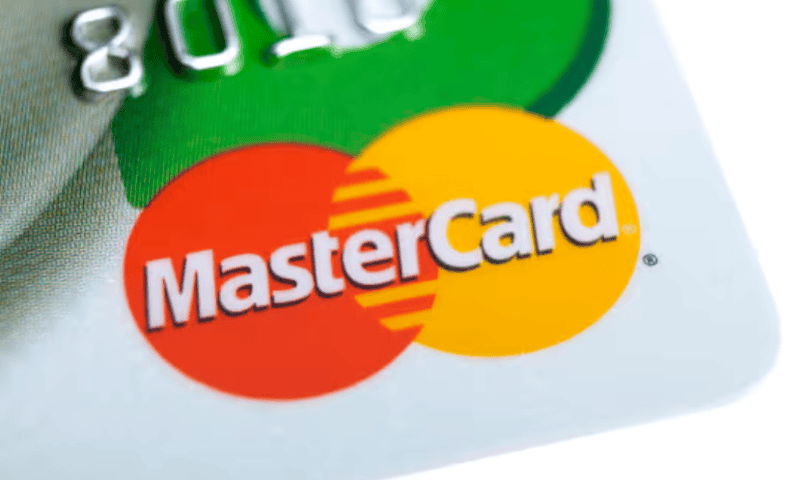Oppenheimer analyst Dominick Gabriele sees 19% upside for the stock over the next 18 months
On Wednesday, Oppenheimer & Co. analyst Dominick Gabriele upgraded Mastercard Inc. to an “outperform” rating with a 12-18 month price target of $510, which was 19% higher than the stock’s closing price of $428.27 that day.
In a note to clients, Gabriele wrote that there was some concern over his estimated annual earnings-per-share growth rate of 17% for Mastercard MA, +0.56% over the next three to five years, because this was slower than the growth pace before the COVID-19 pandemic. But he concluded that the expected profit growth pace was “good enough” to support his price target.
EPS growth
Looking back, Mastercard’s EPS increased at a compound-annual-growth rate (CAGR) of 29.1% for the three-year period ending 2019. That was an incredible pace for earnings growth, compared with a three-year EPS CAGR of 9.4% for the S&P 500 financial services sector and 10.2% for the full S&P 500 SPX. It was slightly behind the three-year EPS CAGR through 2019 of 29.2% for Visa Inc. V, +0.05%, Mastercard’s main competitor payment processing services.
During 2020, when the pandemic placed a drag on consumer spending, Mastercard’s earnings declined 25% to $6.37 a share. The consensus estimate among analysts polled by FactSet is for the company’s 2023 EPS to total $12.16. If we skip the first pandemic year, that 2023 estimate would make for a 17.9% two-year CAGR from Mastercard’s EPS of $5.90 in 2021.
Mastercard will announce its fourth-quarter results on Jan. 31 before the market open. Visa is scheduled to report its fourth-quarter numbers on Jan. 25, after the market close.

Mastercard and Visa both trade at much higher forward price-to-earnings ratios than the financial sector and the S&P 500. Mastercard trades at the highest P/E, while it is also expected to grow EPS much more quickly than Visa over the next two years.
While Mastercard isn’t a cheap stock, rapid earnings growth commands a premium. Gabriele recommended “buying quality to start 2024 vs. chasing high-flying Fintech stocks at current valuations.”
He added: “We’re incrementally positive on payments after its years of underperformance.”
A very long look back for strong financial performance
FactSet defines a company’s return on invested capital, or ROIC, as its profit divided by the sum of the carrying value of its common stock, preferred stock, long-term debt and capitalized lease obligations.
ROIC is an annualized figure that sheds light on a management team’s ability to make the most efficient use of the money invested to fund its business. It isn’t a perfect tool to measure performance, in part because different industries are naturally more capital-intensive than others. Mastercard and Visa have an advantage over lenders, for example, because their businesses are less capital intensive. They don’t gather deposits or borrow money to fund lending businesses. They simply process payments, which means they don’t take credit risk. (The actual lending is done through banks, which is why you apply to a bank for a Visa or Mastercard.)
FactSet calculates ROIC for rolling 12-month periods. So the most current completed ROIC figures are for 12 months ending Sept. 30. Starting with the 72 companies in the S&P 500 financial sector, if we look back at the past 10 most recent 12-month periods through Sept. 30 and average those ROIC figures, here’s how the top 10 companies rank:

Mastercard has had the best average ROIC for 10 years among companies in the S&P 500 financial sector. It has also achieved the highest ROIC for the most recent period. Its minimum and maximum ROIC have also ranked highest over the past 10 years among the 72 companies in the sector.
Click on the tickers for more about each company.

